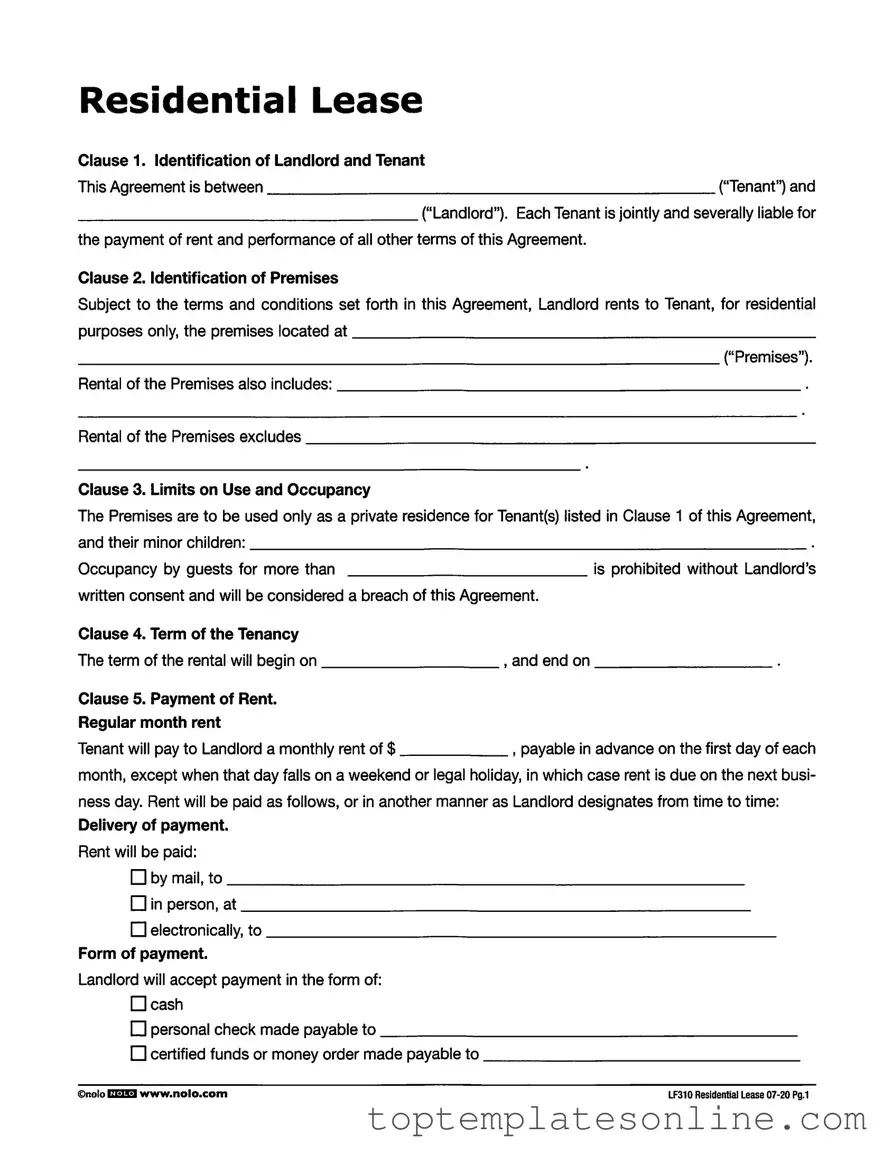The LF310 Residential Lease form serves as a comprehensive agreement between landlords and tenants, outlining the essential terms and conditions governing the rental of a residential property. It begins with the identification of both parties, establishing that each tenant is jointly responsible for rent and other obligations. The form specifies the premises being rented and delineates its intended use solely as a private residence for the listed tenants and their minor children. Importantly, it restricts occupancy by guests without prior consent from the landlord, emphasizing the need for clear communication regarding who may reside in the property. The lease details the rental term, payment schedule, and methods for submitting rent, which is due on the first of each month, with provisions for late charges should payments be delayed. Additionally, it addresses the handling of returned checks and outlines the security deposit requirements, including its proper use and conditions for return. Utility responsibilities are also clarified, indicating which charges the tenant must cover and which will be managed by the landlord. Lastly, the form prohibits subletting or assignment of the lease without written consent, reinforcing the landlord's control over the premises. This structured approach ensures that both parties understand their rights and responsibilities, promoting a smoother rental experience.
